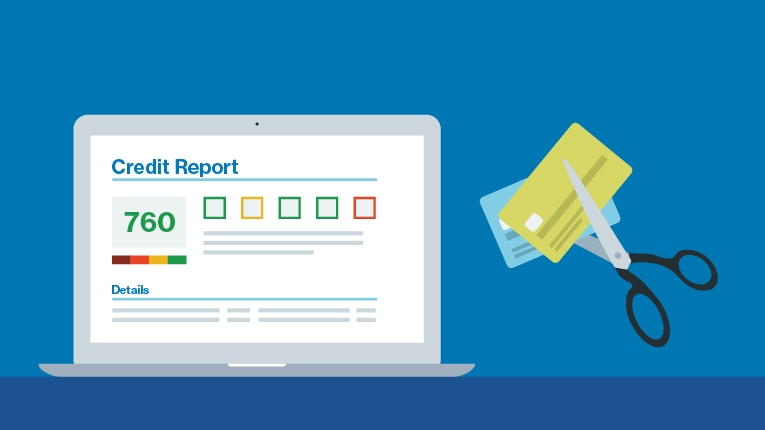Line of credit vs. Personal loans: How to decide what’s best for you

When choosing between a personal loan or line of credit for financing your personal or business needs, both have their pros and cons. There are even situations where you might want both.
Understanding how each works and how they can help you determine what’s best for you.
What is a line of credit?
A line of credit is a flexible account that gives you the option to borrow money quickly when you need it. Similar to a credit card, a line of credit has a maximum credit limit. You can take out loans (called draws) against your credit line, and you only pay interest on the amount you borrow.
What is a personal loan?
Personal loans can be secured or unsecured installment loans. With a personal loan, you’ll receive the entire monetary amount upfront, and then repay it plus interest in regular installments over its repayment term.
Line of credit vs. personal loan
Both can be useful financial tools, but one might be a better fit than the other, depending on your circumstances.
| Line of Credit | Personal Loan |
Loan amounts | Typically ranges from $1,000 - $100,000 | Typically ranges from $1,000 - $100,000 |
Interest rates | Varies | Fixed |
Common uses | For longer-term projects, or as a safety net | For one-time major expenses, or debt consolidation |
Revolving account | Often | No |
Fees | Yes | Varies |
Personal lines of credit:
With a personal line of credit, you can get approved once and make multiple draws as you need the money. You’ll only pay interest on what you borrow, which can make a line of credit a more flexible and inexpensive option if you aren’t going to be tapping into the money (or need a large amount) right away.
Many personal lines of credit are also revolving credit accounts, meaning your available credit frees up as you make payments. A credit card is an example of a revolving credit account: the card has a limit on what you can borrow, and you can continuously borrow and pay off that debt. Like a credit card, lines of credit often have variable interest rates, which means your rate and payment might fluctuate over time.
Personal loans:
A personal loan can be a better fit if you need to cover a big expense and would prefer a fixed interest rate over the term of your loan. Unlike lines of credit that may have a variable interest rate. As a result, it’s easy to determine your total costs upfront and plan your budget accordingly.
However, if you want to borrow more money later on, you’ll have to reapply for another loan. Reapplying can often be easier the second time, especially if you’re doing it with the same lender who already knows you and if your income and credit profiles have remained stable.
When to consider using a personal loan
An unsecured loan can be a good fit when covering major expenses such as:
Unexpected medical bills
Emergency expenses
Home repairs
Home improvements
Funeral costs
You can often apply and get the funds within a few days, and many lenders will transfer the funds directly to your bank account. You can then use the money for almost anything.
A personal loan can also be a good option when you’re paying down high-rate debt, including credit card debt. Taking out a low-rate loan to consolidate your credit card bills can help you save money on interest and may lower your monthly payment. Reducing your debt can also increase your credit score.[1]
When to consider using a line of credit
A line of credit may be a better fit if you have an ongoing project and don’t want to start accruing interest on the entire loan amount right away.
Line of credit use example:
You can use a line of credit for a project that requires payments every few months or if the total cost is unclear. Having a line of credit to tap during emergencies can also be beneficial, although you may have to pay fees to keep it open, even if you’re not using it. In some cases, using a secured line of credit—like a home equity line of credit (HELOC)—could be a good option, particularly if you’re using the money to improve your home. However, a HELOC typically requires you to have equity in your home and pay closing costs, whereas a personal line of credit does not.
Line of credit or loan qualification requirements
Qualifying for a line of credit or loan varies depending on the specific type of financing and the lender. You’ll generally need to meet the basic eligibility requirements, like being at least 18 years old and living in a state where the lender operates. Additional requirements can include:
Requirements for qualifying for a line of credit
Good-to-excellent credit
A steady income
Collateral for secured lines of credit
Requirements for qualifying for a loan
Fair-to-good credit
A steady income
Collateral for secured loans
How to apply
The application process will vary by the financial institution and whether you’re looking for a line of credit versus a personal loan. You may be able to check your rate and loan offers with a soft credit check, which won’t hurt your credit scores.
How to apply for a line of credit
Compare options from several lenders to identify the best fit. You’ll want to review the potential credit limit, annual or monthly fees, and any required initial draw amounts when making your decision. Then, submit applications to compare your loan offers.
How to apply for a personal loan
When deciding, consider your APR—the total, annual cost of borrowing, including interest and any other fees you may be required to pay. You should also consider maximum loan amounts, potential repayment periods, and whether or not the lender charges prepayment penalties or application fees. Keep in mind a longer repayment period can lead to lower minimum monthly payments, but a shorter term can lead to lower interest rates. Check your rate with several lenders to see which offer works best for you.
The bottom line
A line of credit and personal loan both have their benefits and drawbacks, depending on your situation. If you need ongoing financing or a safety net, a line of credit might be your best option. If you know the exact amount of money you need and want a fixed repayment schedule, a personal loan could help set you up for greater financial success. In either case, doing research and checking your rate before applying can help you get the best offers.
FAQ
If you’ve just started exploring personal loans, you probably have a ton of questions. Here are some of the most common.
Is it better to get a personal loan or line of credit?
It depends on what you need. A line of credit can offer flexibility and let you take multiple draws without applying for a new account, which is convenient if you don’t know how much money you’ll need. But a loan may offer a lower interest rate, and the fixed monthly payments can make it easier to budget for and repay. That being said, if you need ongoing funds, a line of credit could be your best option. But if you know how you plan on using the money, a personal loan could offer better interest rates and a simpler repayment schedule.
Is it bad to get a line of credit?
Opening a line of credit isn’t bad, but review the account’s terms carefully to make sure they align with your financial needs. For example, some lines of credit will charge you a monthly or annual fee, even if you don’t use the credit line, and could potentially negatively impact your your debt-to-income ratio and credit score.
What is the benefit of a line of credit?
A line of credit can offer flexibility as you’ll be able to borrow up to your account’s credit limit, but you aren’t required to borrow more than you need. You also only pay interest on the amount you borrow.
Do I need good credit to get a loan or line of credit?
Some lenders offer personal loans and lines of credit to borrowers with poor credit, but there may be high interest rates and fees.
1. Reducing debt and maintaining low credit balances may contribute to an improvement in your credit score, but results are not guaranteed. Individual results vary based on multiple factors, including but not limited to payment history and credit utilization.




